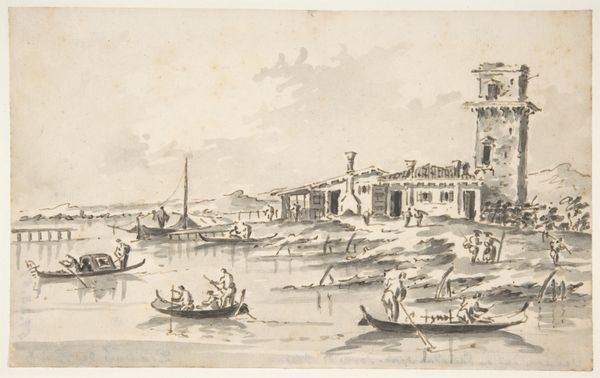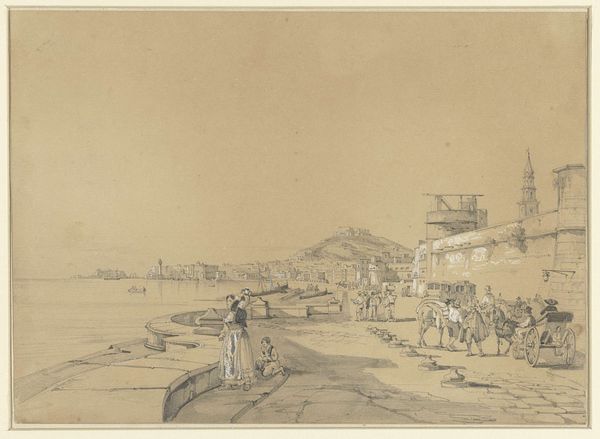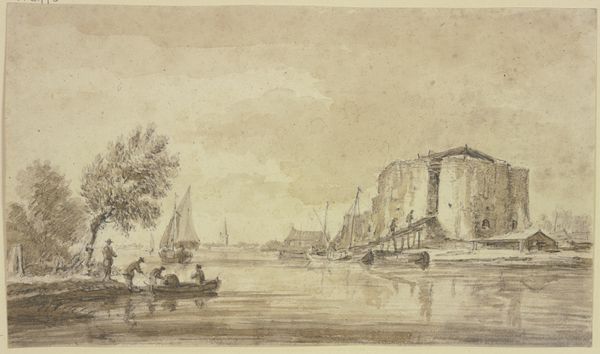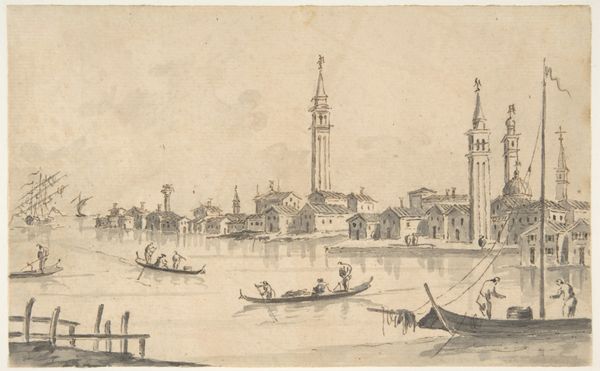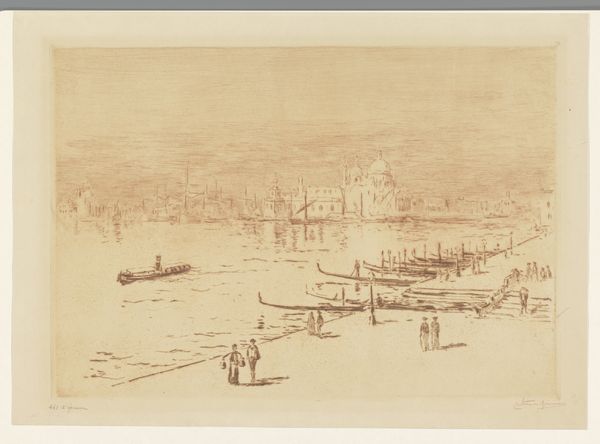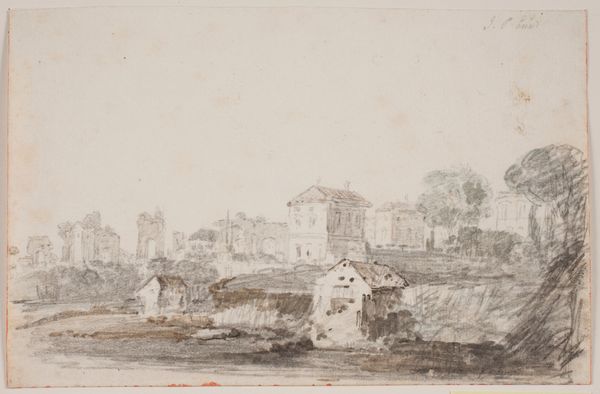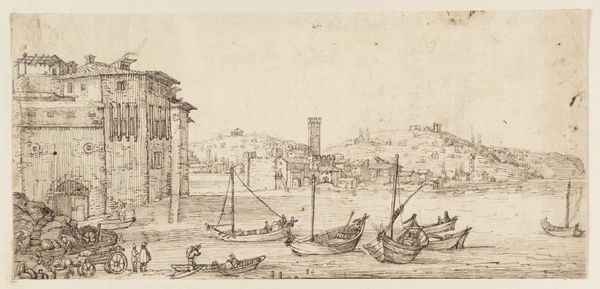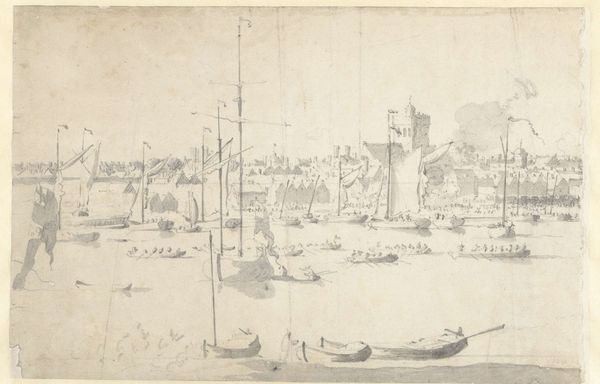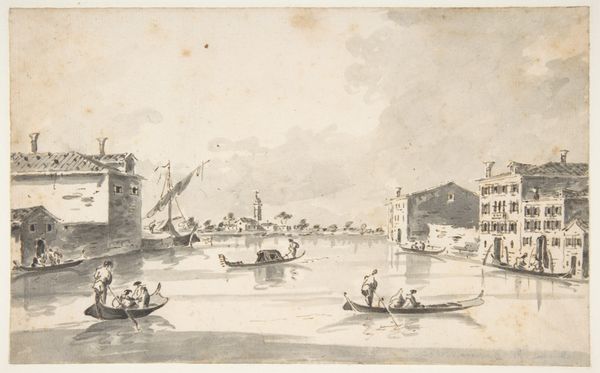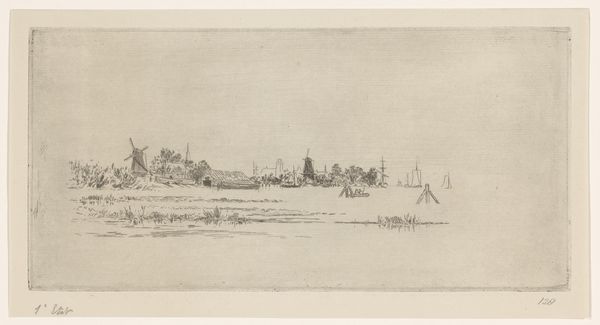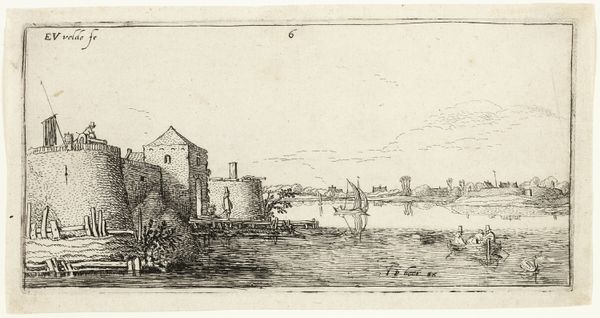
drawing, watercolor, ink, chalk
#
drawing
#
baroque
#
landscape
#
etching
#
watercolor
#
ink
#
chalk
#
cityscape
#
watercolor
#
building
Copyright: Public Domain
Editor: This drawing, titled "Sacca della Misericordia" by Francesco Guardi, employs chalk, ink, and watercolor to depict a cityscape. The somber, sepia tones create a muted effect... What historical narratives do you see woven into this piece? Curator: It’s fascinating how Guardi captures Venice, not just as a beautiful cityscape, but as a site of labor and movement. The boats aren't simply picturesque; they're conveying goods and people. Consider how the waterfront, traditionally a space of connection and commerce, might have been experienced differently across social classes and genders at that time. How do you think Guardi’s own social position may have influenced his choice to focus on the everyday aspects of Venetian life? Editor: I hadn’t considered that. I guess I saw it more as an idyllic scene. You're saying we should question whose Venice is being represented here? Curator: Exactly! It’s important to remember Venice's complex social hierarchies. Think about the role of marginalized communities, the invisible labor that kept the city functioning. While Guardi's technique is undeniably masterful, we should also consider whose stories are absent from this idyllic view. Does focusing on labor change the emotional impact for you? Editor: Definitely. Knowing that gives the scene a sense of grounded reality and prompts reflection on the full picture of Venetian society, not just a surface-level image of beauty. Curator: Precisely. By understanding the socio-political contexts, we can engage with art in a more nuanced, critical, and ultimately more meaningful way. Editor: I now realize there are many layers to discover within such a seemingly simple cityscape.
Comments
stadelmuseum about 2 years ago
⋮
Located off the tourist-trodden path, the harbour basin Sacca della Misericordia was a popular place of residence for the wealthy. A area rather uncharacteristic of Venice, it was a rare subject for painted veduti except in the work of Francesco Guardi. Yet the style is too monotonous and uniform to allow an attribution to Guardi, whose manner is characterized by greater diversity and suspense. It is therefore believed to be a work by one of the master’s successors, who may have copied it from a Guardi drawing unknown to us today.
Join the conversation
Join millions of artists and users on Artera today and experience the ultimate creative platform.
